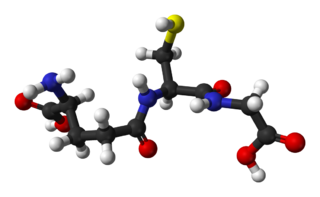| pyrimidodiazepine synthase | |||||||||
|---|---|---|---|---|---|---|---|---|---|
| Identifiers | |||||||||
| EC no. | 1.5.4.1 | ||||||||
| CAS no. | 93586-06-2 | ||||||||
| Databases | |||||||||
| IntEnz | IntEnz view | ||||||||
| BRENDA | BRENDA entry | ||||||||
| ExPASy | NiceZyme view | ||||||||
| KEGG | KEGG entry | ||||||||
| MetaCyc | metabolic pathway | ||||||||
| PRIAM | profile | ||||||||
| PDB structures | RCSB PDB PDBe PDBsum | ||||||||
| Gene Ontology | AmiGO / QuickGO | ||||||||
| |||||||||
In enzymology, a pyrimidodiazepine synthase (EC 1.5.4.1) is an enzyme that catalyzes the chemical reaction
- a pyrimidodiazepine + glutathione disulfide + H2O 6-pyruvoyltetrahydropterin + 2 glutathione
The 3 substrates of this enzyme are pyrimidodiazepine, glutathione disulfide, and H2O, whereas its two products are 6-pyruvoyltetrahydropterin and glutathione.
This enzyme belongs to the family of oxidoreductases, specifically those acting on the CH-NH group of donors with a disulfide as acceptor. The systematic name of this enzyme class is pyrimidodiazepine:glutathione-disulfide oxidoreductase (ring-opening, cyclizing). Other names in common use include PDA synthase, pyrimidodiazepine:oxidized-glutathione oxidoreductase (ring-opening,, and cyclizing). This enzyme participates in glutathione metabolism.



